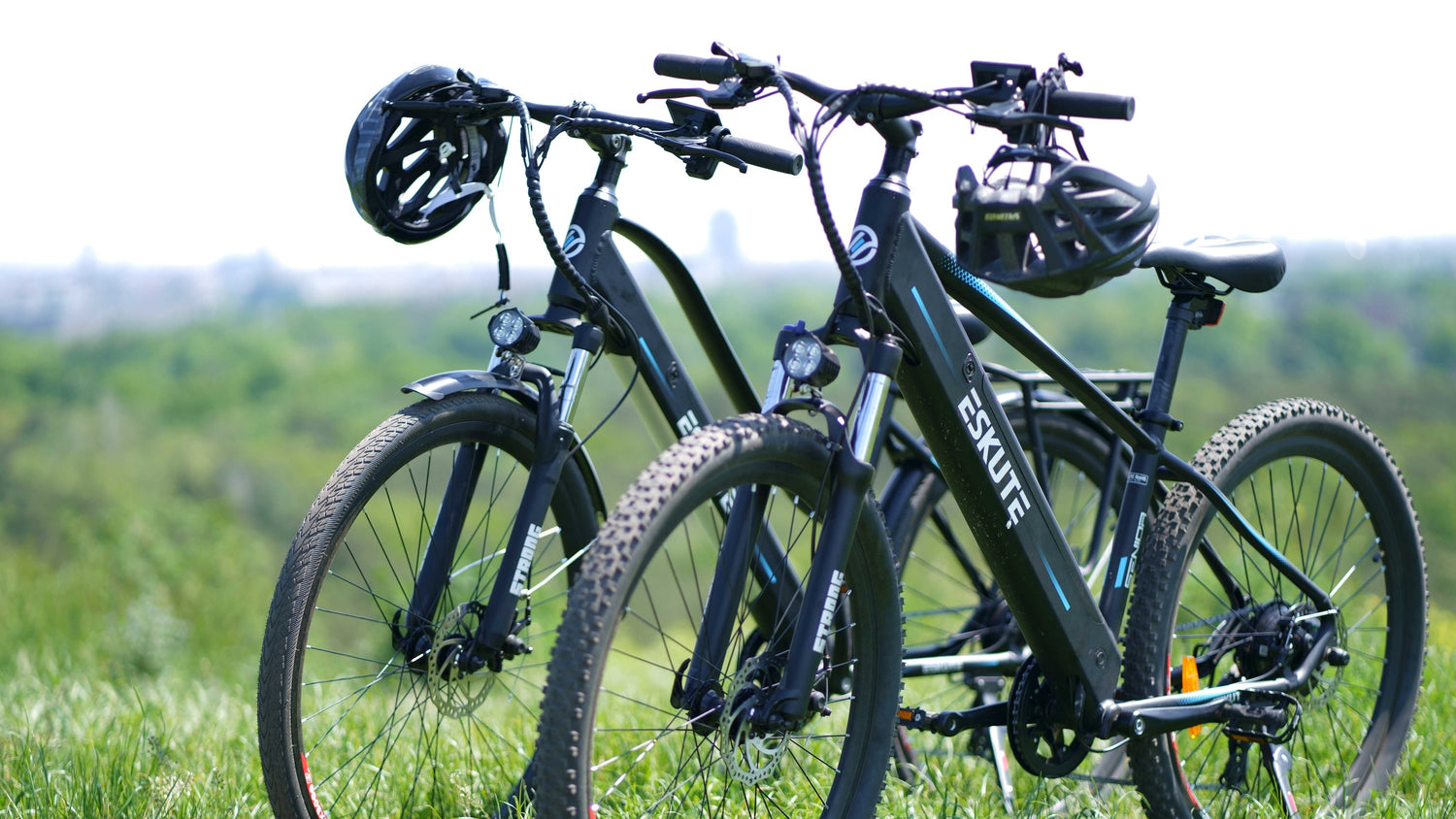Navigation
As you already know, the real advantages of the E-bike, or Electric Bicycles, are climbing performance, wind immunity, and better range. For those with knee pain or other medical conditions such as exercise-induced asthma, electric bikes can drastically enhance your sporting lifestyle. They enable you to reach work feeling fresh or even get your loved ones to join in on the fun. Electric bikes offer the same benefits a conventional bike can, with the surplus of cost efficiency, health benefits, and the most important of them all—a fabulous ride.
Now that we've enticed you to read more, it's time to toss multiple vital factors for you to consider when purchasing your first bike. A piece of information— there are more than a thousand different models out there, just in the European market alone!
1. The Playing Field
There exists a ton of electric bikes designed for different purposes. The spectrum is infinite, so to pinpoint precisely one, we urge you to think. How exactly will you spend your day, and when do you incorporate an electric bike? Think about where you're going to ride your e-bike the most frequently. E-bikes are generally geared towards different kinds of activities and terrains. The few most common being cargo hauling, trail riding, cruising, downhill, road biking, sand and snow (fat tire) riding, traveling, child transportation, and urban commuting. These are the questions you should affirm before entering the playground of e-bikes, the store.
2. Riding System
Pedelecs and "Twist-n-Go" are the two main types of electric bikes. A short description of the pedelec is a type of bike that relies partially on motor assistance. The assistance, called "pedal-assist," reveals itself when the rider is pedaling the e-bike automatically. In most countries, the motor output is regulated at 250W and up to a maximum speed of 25km/h. Once the speed limit is reached, the motor automatically ceases all assistance. There also exists a higher-speed alternative to the 25km/h pedelec, a 45km/h ride. The downside is, riders need to register a special license, plates, and insurance. The rules and regulations for every country are different, so it's always good to enquire at the local bike shop near you.
The "Twist-n-Go" e-bikes utilize a switch to activate assistance from the motor. They can entirely depend on the motor's output to power up the bike; pedaling will not be required.
3. Motor Placement
Hub motor or Crank motor, I'm pretty sure you've heard of it if researching is all you do. A electric hub motor is mounted in one of the wheels, most commonly the rear wheel. They tend to be more silent than their counterpart but less effective when a hill climb is needed. The Crank motor is mounted at the bottom of the frame. It can be a little noisier depending on the brand or type, but it does generate more power. Always pick reputable brands like Bosch, Bafang, Yamaha, or Shimano.
4. Battery
All rechargeable batteries are made from lithium-ion in this day and age, so are ours. The quality of a battery makes a huge difference in the performance of an e-bike. Since batteries degrade and hold a lesser charge over use and time, finding out you have less than 10km of distance left is a bummer. Our in-house battery is protected by two years of warranty, enough to give you a ride for your money. Also, a lithium-ion battery's estimated charge life is about 800 complete cycles. So if you ride twice a week, that would last you over three years of commuting.
Better batteries will also most definitely charge faster. Ask what batteries the e-bike provides before jumping to a conclusion.
5. Range
Probably the most crucial aspect of an e-bike. The range is the overall distance the e-bike will travel in a single charge. Determining range involves a complicated process of calculating the battery capacity, the speed, the rider's weight, profile of the commute, the pedal-assist level, and the motor's output for assist. So if you ride as little as 10km a day, you wouldn't need a bike that goes 100km. That being said, more is always better, but at the cost of a bigger, heavier battery and possibly a heftier price tag.
6. Cost Ratio
Finding a superb bike that fits each of your criteria may be a given. But at what cost? Good e-bikes aren't cheap, but basic models don't give you the 'wow' factor. A quality frame, great suspensions, and functional brakes are expensive, needless to say, other parts. When buying an e-bike, a good motor is always a deal maker, so don't be surprised to see yourself spending more. It always rides and lasts better, longer.
7. Test Phase
Most importantly, try the electric bike out. Undoubtedly the most important of all the listed factors. If you don't like it, why buy it? This helps you put aside raving reviews and specifications from other consumers. You be the judge of your ride; that's what we'd like to emphasize.
After reading this article, check out our Eskute bikes; they might be the ones you're looking for in terms of pricing, battery, range, and other meticulously thought-out specifications.
Eskute Wayfarer: Check it out here
Eskute Voyager: Check it out here










6 comments
roy thomas
Good information,but are there any statistics detailing the inclines that the bike is capable of
attaining using pedal assist?
Leave a comment
This site is protected by hCaptcha and the hCaptcha Privacy Policy and Terms of Service apply.